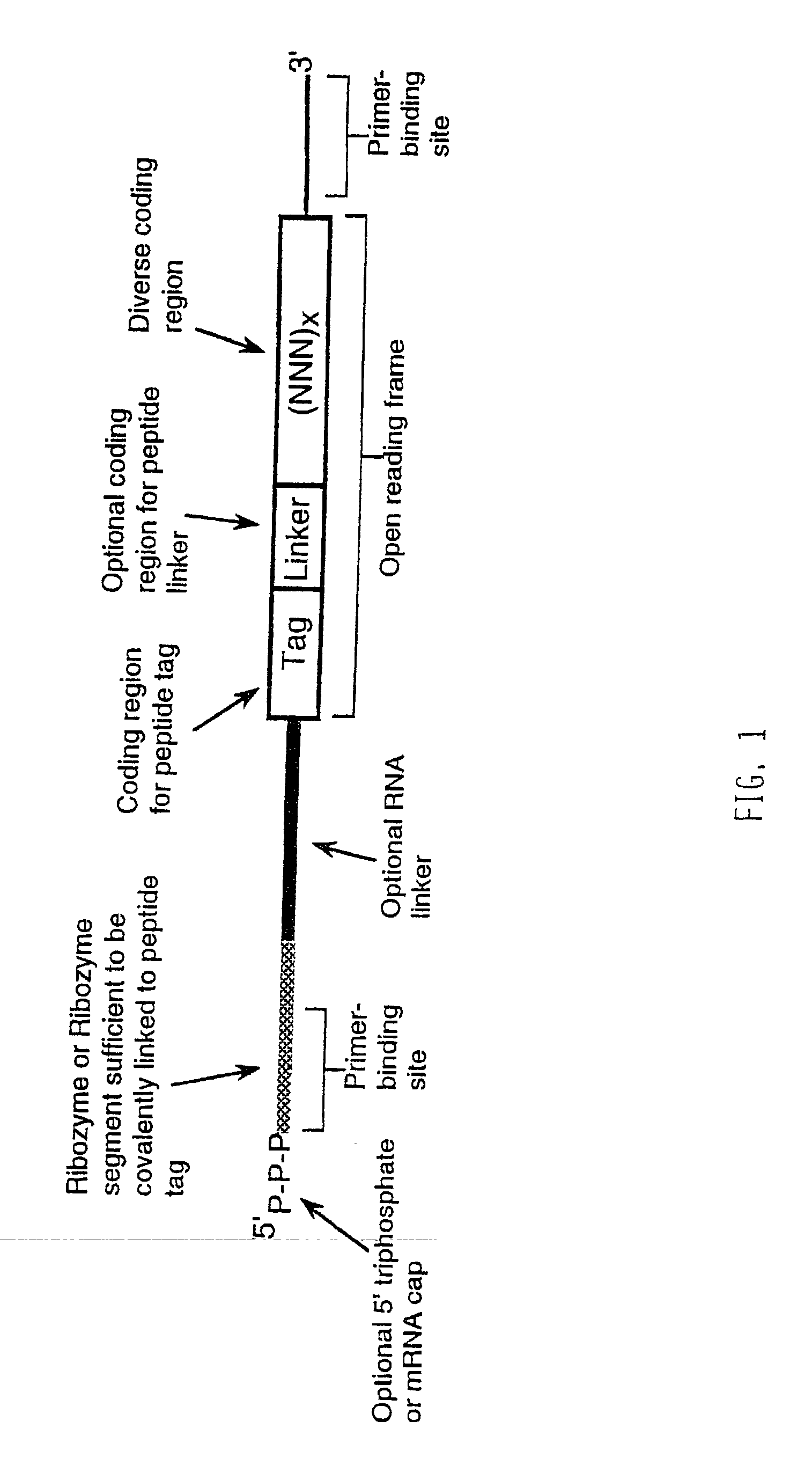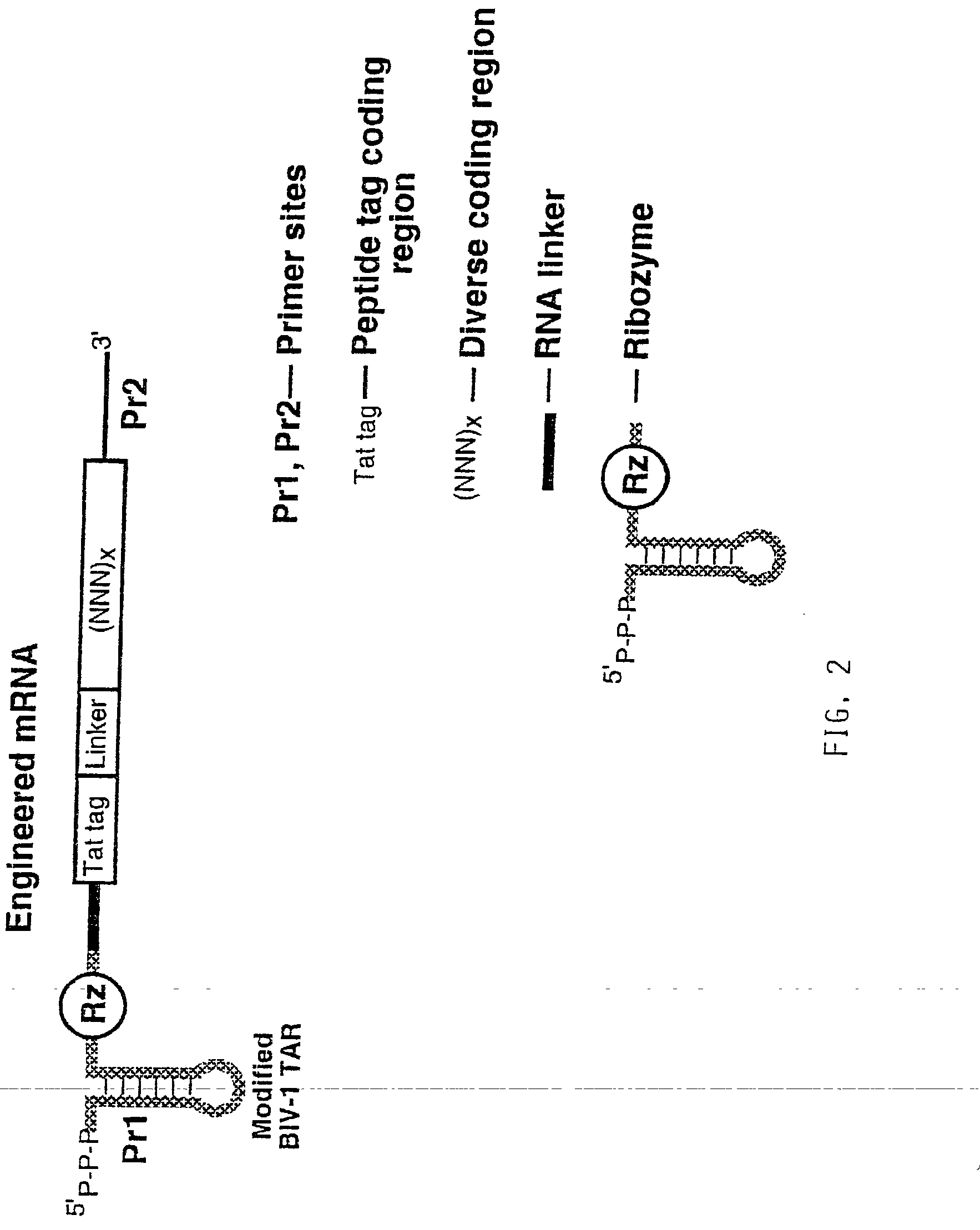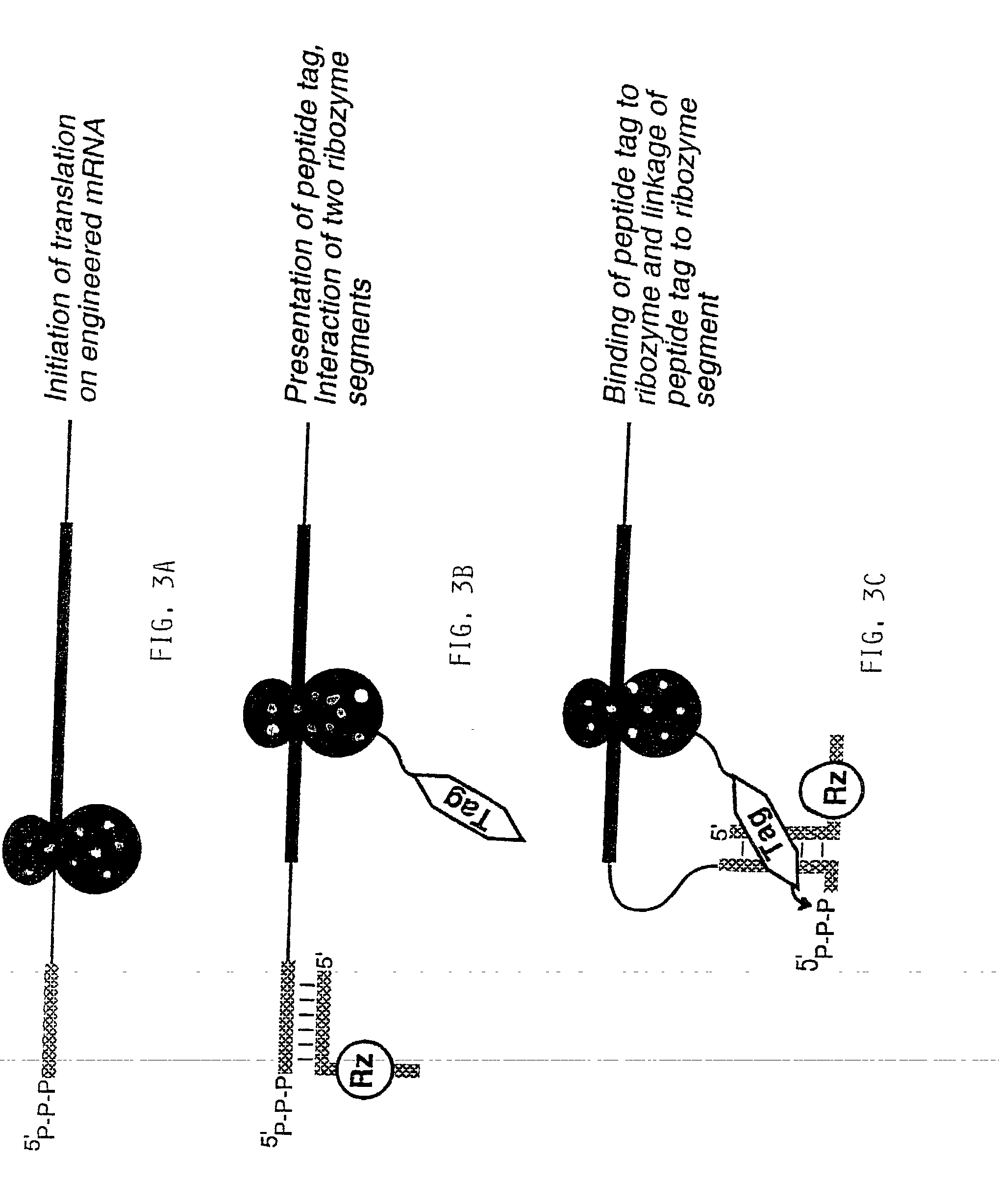Use of a ribozyme to join nucleic acids and peptides
a ribozyme and nucleic acid technology, applied in the field of ribozyme to join nucleic acids and peptides, can solve the problems of limited ability of current systems to easily generate large complex libraries of polypeptides, and achieve the effects of preventing aggregation, increasing the solubility of expressed proteins, and facilitating the formation of complex libraries
- Summary
- Abstract
- Description
- Claims
- Application Information
AI Technical Summary
Benefits of technology
Problems solved by technology
Method used
Image
Examples
example 2
An 18-nt Ribozyme RNA Segment that Specifically Covalently Links to the Tat Tag Peptide in the Presence of the Remainder of the Ribozyme Sequence
[0088] 16.9.split (FIG. 6) is a two-part ribozyme that is a version of the ribozyme shown in FIG. 5A (SEQ ID NO: 5), where the ribozyme has been split at the loop of paired-region 2 (P2) and the P2 helix has been extended by 5 base pairs. The loops of P5 and P6 have also been shortened and stabalized. This 18-nt RNA (SEQ ID NO: 7, pppGGACAGCUCCGAGUGUCC) and 79-nt RNA (SEQ ID NO. 8, pppGGACACUCGUGUAGCUCUGACCAUGGAGUACAGCUUCGGCUGGUA-UA UGGCCAAGUACUUCGGUACUCAUCCCUCCAAG) function together as a ribozyme in which the 18-nt ribozyme RNA segment specifically covalently links to the Tat tag peptide.
[0089] The two ribozyme RNAs of 16.9.split (SEQ ID NO: 7 and 8) shown in FIG. 6 were transcribed in vitro using T7 RNA polymerase and appropriate templates. The RNAs were gel purified, then incubated together with biotinylated Tat tag peptide (SEQ ID NO. 1...
PUM
| Property | Measurement | Unit |
|---|---|---|
| pH | aaaaa | aaaaa |
| nucleic acid | aaaaa | aaaaa |
| chemical diversity | aaaaa | aaaaa |
Abstract
Description
Claims
Application Information
 Login to View More
Login to View More - R&D
- Intellectual Property
- Life Sciences
- Materials
- Tech Scout
- Unparalleled Data Quality
- Higher Quality Content
- 60% Fewer Hallucinations
Browse by: Latest US Patents, China's latest patents, Technical Efficacy Thesaurus, Application Domain, Technology Topic, Popular Technical Reports.
© 2025 PatSnap. All rights reserved.Legal|Privacy policy|Modern Slavery Act Transparency Statement|Sitemap|About US| Contact US: help@patsnap.com



